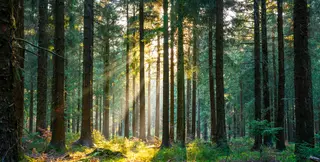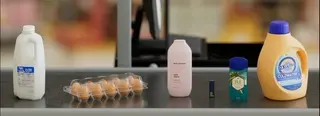
Preserving our planet is a daunting task, one that requires the best efforts of many different leaders across an array of disciplines. So when it comes to some of the most common responses — things like environmental conservation efforts or increased and improved recycling — humanity must continually improve.
Luckily, that’s what’s been happening in the U.S. In 2023, 71-76% of corrugated cardboard packaging gets recycled annually. The 2023 American recycling rate for paper is 65-69%, and paper nowadays can generally be used to make new products up to seven times. (Perhaps it’s no surprise that paper and paper-based packaging have become one of the most recycled materials in the country, accordingly.)
Improving existing methods alone won’t solve the current climate crisis, however. There’s a need for new ideas and approaches, and luckily, a new generation of environmentally minded leaders has stepped up to the challenge.
Jessica Levine, The Recycling Partnership
Recycling in the U.S. has undoubtedly improved since curbside collections rose to prominence in the 1960s. Entire cities now strive to divert all materials from local landfills, with places like San Francisco leading the way at 80 percent waste diversion. When it comes to individuals, the desire and will to recycle is there, too. According to the Paper and Packaging Board, nearly all Americans (95 percent) say they recycle.
Unfortunately, not everyone has the same opportunity to recycle right now. “We know Americans want to recycle, about nine in 10, but we know not everyone can — about four in 10 lack equitable recycling access,” says Jessica Levine of the Recycling Partnership, a nonprofit focused on improving recycling in the U.S. “By equitable access, we mean everyone can recycle as easily as they can throw something away in their home.”
For context, the four-out-of-10 figure equates to nearly 100 million Americans. So to help address this gap, Levine and her organization started the Recycling Inclusion Fund in the fall of 2020. The new initiative specifically addresses recycling-access disparities in the U.S. that are related to race. The goal is “to close equity gaps, so all residents have access to the tools and resources they need for a more sustainable life,” Levine says.
Part of the fund is a fellowship to help young leaders from diverse backgrounds in the waste-reduction and recycling world find opportunities and mentorship in the industry. Long-term, that can help the recycling and waste-reduction industries become more diverse professionally and better reflect the communities they serve. The fund’s other focus involves collaborating with specific communities to identify and fix systemic issues hampering local recycling access. Within just one year of starting the program, the Recycling Partnership has already found success with the city of Orlando (bringing recycling containers and information to nearly 75,000 city-sponsored multifamily dwellings) and Baltimore (making recycling containers free for the city’s almost 600,000 residents, who previously had to purchase those themselves).
Thomas Schinko, makingAchange
Picture the face of climate-change activism, and who do you see? From Greta Thunberg to the twentysomethings of the Sunrise Movement, young people are increasingly leading when it comes to fighting climate change. Scientists interested in doing the same, like Thomas Schinko of the Equity & Justice Research Group, recognize this.
That’s why Schinko and a group of his peers in Austria worked with government agencies to form makingAchange, a training program to transform interested students into the best climate-change knowledge brokers they can be. More than 100 student leaders from 20 different schools across the country are currently enrolled.
They learn complex skills like how to build raised-bed gardens and grow organic produce, but makingAchange also holds workshops on how to tell better stories on TikTok and training sessions on hosting successful climate-activism events. “Establishing scientific facts about climate change and offering scientific projections of future change on its own does not drive political and societal change,” Schinko says. “The role of science is changing fast from ‘adviser’ to ‘partner’ in civil society, policymaking, and decision making. With the makingAchange project, we are actively engaging in this transformational process.”
Brian Morris, Webster Forest Nursery
The push for a more sustainable world really starts in one place: forests. Many industries rely on materials from privately owned forests, which make up more than half of the nearly 766 million acres of forest land in the United States. To better maintain these private forests, organizations within the paper and packaging industry have been investing in more modern technology (from drones observing infestation threats to satellites mapping ideal growing areas). This helps ensure healthy and growing forests, part of the collective priority to increase the overall forest coverage in the United States. As of 2017, the U.S. is growing nearly twice the volume that is removed from timberland, with more than 1 billion trees now being planted annually.
Planting, however, is not simple work. To grow forests, the effort starts in places like Webster Forest Nursery, in Olympia, Washington. “The trees we grow support sustainable building products and sustainable wood products, whether that’s pulp and paper or lumber. Go through the list of things wood is used for — even toothpaste — and the number of things derived from forest products is phenomenal,” says Brian Morris, the nursery program manager at Webster Forest. “Our objective is to make sure that can continue, that there’s a forest for tomorrow.”
Since the recession of the mid-2000s, that’s been increasingly challenging. Morris and the Webster team have been operating at max capacity for a decade-plus, and Webster produces 8 to 9 million trees per year. To rise to this challenge, experts like the staff at Webster Nursery are looking for ways to optimize. They’ve been working with fellow scientists and nearby NASA research centers to analyze things like root development, irrigation, fertilization, location, and more.
And as society reprioritizes the environment, demand for new trees has rapidly increased. “This isn’t a glamorous job. I’m currently standing in a funky little building built in 1955, and my car is covered in dirt every day,” Morris jokes. “You do this because you have a passion for it. So, it’s been interesting to see this old industry being highlighted since the societal push for sustainability is catching up around us. We’re coming into our heyday, but forest nurseries have always been here, and we’re often just an overlooked part of the puzzle.”



